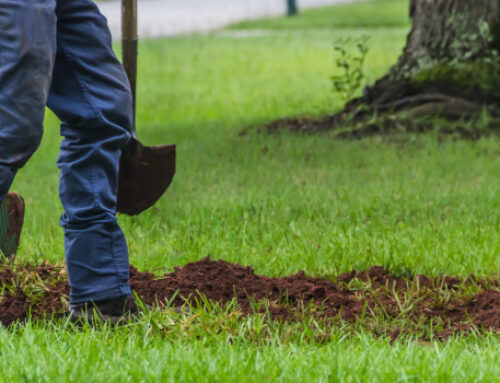Are you looking to increase engagement within your community? Or do you simply want to help create a community that your fellow homeowners love calling home?
It can be difficult to find time to volunteer in your community, and when you do, helping your neighbors socialize with each other may seem like a low-priority task.
The prevalence of social media can further make in-person socializing seem unnecessary. While social media can certainly keep people connected, it can still be hard to manage a community that suffers from a high level of personal disengagement.
You might be wondering – does it really matter if association members are disengaged? When you present opportunities for your neighbors to get to know each other and the community leaders in a fun, social setting, you are creating real relationships.
When real relationships exist and thrive, the community as a whole is able to recover more easily when something unfortunate in the community happens.
Furthermore, homeowners will be less likely to take their frustrations out on their board members. Homeowners who have a relationship with their leaders are more willing to work constructively to fix problems when they arise.
One of the best ways to increase both engagement within a community and create an association people feel attached to is through a robust social strategy. The most effective way to build a sense of community is by creating a strong social committee.
This article is meant to help boards in all situations with an overview of what committees are, why creating a social committee is important, and provide some very practical tips and guidance that boards can take and apply to their specific situation when creating their own social committee.
Read below for our tips and suggestions on how to create or revamp your social committee.
Why is it important to have a great social strategy?
Building a social committee is a great way to increase member interaction and create a community that feels like home.
One of the best ways to get engagement going is through relationship building; making the social committee one of the most important, if not the most important, optional functions of an HOA.
Working to build community engagement offers the following benefits:
- Helps build trust
- Connects people
- Develops new leaders
While you cannot force community engagement, there are actions you can take to encourage engagement. If you’re wanting to increase community engagement via starting a social committee, it’s important to keep these principles in mind:
- Be clear with your team and membership about the purpose and goals of the social committee.
- Touch base with your HOA’s overall culture and ethos; be aware of the economic conditions and preferences of your membership.
How does a community benefit from community engagement?
Communities and people can’t operate in isolation; when you work in conjunction with others, you can achieve your goals more easily. This is especially true when living in an HOA-context, as virtually all your goals are going to be based on managing people’s resources.
Engagement Happens One-on-One
The most common problem people encounter when creating a social committee is thinking that creating events alone will lead to community engagement or community satisfaction.
Community building occurs on a one-on-one basis. Often, people gravitate toward causes and get involved in organizations because of their affiliation with another person. So, when starting a social committee, it’s important to gear your events toward a lot of one-on-one interaction and socializing.
View the social committees’ efforts as the vehicle by which you can get to know people better yourself. Concerned if you have a social gathering, people won’t mingle? Resolve with your fellow board members to work together and meet every single person or family that comes to your gathering. This will help you build relationships with your community, and people will be more likely to come if they know they’re going to see a friendly face.
Tips for Reaching Out to Others During Social Events
Is talking to someone you’ve never met before way outside your comfort zone? That’s okay! Consider the following tips, which will help you in your community building efforts:
- Remember to smile as you approach. This will instantly make people feel more comfortable and get the meeting off on the right foot.
- Go into the conversation with the goal of finding one thing in common with the person. Once you find something in common, be it your kids’ interest or a shared personal hobby, the conversation becomes much more free-flowing.
- Ask questions. While you don’t necessarily want your meeting to come across as an interrogation, if people get the sense that you’re really listening to their answers and are genuinely interested, they will feel positive about the interaction. (As a bonus, asking questions takes the onus of the conversation off you – all you need to do is ask questions and have appropriate responses lined up.)
- Be genuine. When they say something that aligns with your personal experience, tell them! While it’s not recommended to venture into potentially controversial topics – especially on a first meeting or a community event context – trust is created when people have a real sense that they know you as a person, and that includes knowing your opinions on things.
- Remember, you’re not necessarily looking for a soul-brother or a soul-sister. You don’t have to have a fabulous, instant connection with someone or agree with everything they say in order to make a basic connection with the person. Your goal is create a stronger, more well-knit community.
- Rejection rarely happens, so there’s no reason to fear it. Sometimes people are reluctant to reach out and make connections because they’re worried that an interaction will not go well. However, like all skills, practice makes perfect, and even as your practicing, it is very rare that you will have a conversation with a total stranger that goes sour.
Ultimately, camaraderie provides meaning and richness to peoples’ lives. By helping people create relationships close to home, your helping people live healthier, more fulfilling lives.
Decide Why Having A Social Committee Is Important for Your HOA
What is the end goal? Is the goal to create a small-town feel? Do you want the events to lead to more community engagement in other areas? Are you trying to be a life-style oriented committee? Whatever the board’s end goal is for putting money toward socializing, make sure everyone is on the same page before creating or restructuring the committee.
It’s especially important to make sure your committee members are onboard with the board’s vision for the social committee. Make sure committee members understand what the end goal is, so that they can make choices accordingly.
Once you have your goals lined up and everyone is on the same page, you’re ready to start building your committee!
What is a committee, and what is their role within an HOA?
An HOA committee is an organization created to assist the board in handling a specific problem or set of tasks. Examples of common committees are landscaping committees, communications committees, and, of course, social committees.
The basic purpose of a committee is to do the majority of the time-consuming tasks that are involved in creating change on that particular issue. This saves the board from being the one to have to make every initiative happen on their own.
Examples of tasks that committees might do for their boards include meeting with vendors, coordinating and organizing activities, collecting, compiling and sharing information, and making recommendations to the board.
A properly functioning committee can be a huge benefit to a board and save board members hours of work.
While HOAs don’t have to have committees, committees can be a crucial component in any HOA management strategy.
What authority do committees have?
Virtually all committees (except for the ACC or ARC) derive their authority from the board, which means they fall under the board’s purview.
If a committee is under the board’s purview, then it has limited authority, and cannot make decisions without board approval.
Types of Committees
When organizing a social committee, keep in mind that there are three types of committees: ad-hoc, fixed (or standing), and mandatory.
A fixed or standing committee exists indefinitely and addresses specific functions (i.e., organizing a community’s social events). Standing committees usually meet on a regular basis, like the board (i.e., they meet monthly, quarterly, or annually). A HOA’s social committee will most likely fall under the fixed or standing committee category.
Ad-hoc committees address a specific event or issue. For example, what if a Walmart is going in across the street, and most of the membership opposes it? A committee might be formed for the express purpose of addressing that issue. Once the Walmart is constructed (or they decide on another location), the board would dissolve the committee.
While it is less common for a social committee to be an ad-hoc committee, it is possible a board might decide to form a committee for one specific social event.
Mandatory committees are committees that are mandated by the governing documents. Typically, the committee that would fall under this category is the ACC or ARC. The board cannot abolish a mandatory committee.
Are there any other, less common, types of committees?
It is, theoretically, possible to have a subcommittee within a committee.
For example, if you belong to a large association and have a relatively large number of volunteers, you may choose to host two events close to one another, like a Christmas party one week and a cookies with Santa event the next week.
It might be wise to divide your committee up equally and create two subcommittees; a cookies with Santa subcommittee and a Christmas party subcommittee.
States may also have broader categories for committees, depending on what their legislature permits – more on that below!
Are there any laws that are relevant when making a social committee?
The best place to start when creating your social committee is with a good foundational structure. While HOA law varies from state to state, we will take a look at two states, Texas and Arizona, so boards can get a feel for what to watch out for when researching the HOA committee laws for their state.
Texas
In Texas, committees are separated into two separate categories: management committees and non-management, or “other,” committees.
Management committees are similar to management companies: they handle the business of the association. The primary difference, from a legal perspective, is that a management committee has the authority to exercise the power of the board.
Non-management committees are committees that do not have the board’s authority. They also do not have to be comprised of board members in order to function (though boards or the developer can mandate that the membership be comprised of board members)
While it is not required for non-management committees to give notice for their meetings, it may be advisable to do so, depending on the context of the situation.
It’s important to remember that if you have a quorum of the board available at a committee meeting, never vote on an issue that might fall within your state’s parameters for what needs to be discussed and voted on at a properly noticed board meeting.
Under Texas law, charters are not required.
Arizona
Committees in Arizona fall under two basic categories: board committees and advisory committees.
Board committees are committees with far reaching authority (equal to that of the board’s authority on most issues). In order to qualify as a board committee, board members serve on it exclusively. Your governing documents can limit an HOA board’s ability to create board committees.
So, theoretically, your social committee can act with a board’s authority in Arizona, as long as all the members of your association’s social committee are board members.
Advisory committees in Arizona serve the board in an advisory capacity. Their job is to help the board make decisions, not make decisions for the board.
Creating a committee in Arizona requires one of two requirements be met: one, the board votes in a majority for the ratification of the committee. Two, the board votes and the number of board members required in the articles of incorporation or bylaws vote to ratify it. Under Arizona law, boards adhere to whichever requirement results in the higher number.
The board can also limit the committee’s membership based on a variety of factors; for example, if you want committee members who are members of the community, in good financial standing, etc.
In Arizona, some of the open meeting laws do pertain to committee membership. While committee members do not have to be noticed for regular meetings of the committee, if there is a non-regular meeting scheduled, then, legally, committee members need to be alerted 48 hours in advance.
Like in most other states, the members is allowed to go to all committee meetings.
Notably, in Arizona, if an HOA has an active committee, then the committee must hold regularly scheduled meetings. The membership must be given notice (though it doesn’t necessarily have to meet the 48-hour rule that board meeting meet).
The exception to the 48-hour rule is if a quorum of the board is attending your committee meeting; then, Arizona law dictates the membership be alerted at least 48 hours before.
A charter is not required under Arizona law, but it is a good best practice.
In addition to your state’s committee requirements, we encourage you to check your community’s governing documents to ensure that your committee meeting practices align with your documents’ expectations.
To Charter or Not to Charter?
It depends on if your state mandates them. Generally speaking, having a committee charter is a best practice. Charters enable the committee to run in an organized, guided way.
A charter is a document that provides the committee’s purpose and other relevant details, like the number of members, how to appoint a chairperson, the committee’s responsibilities, etc.
In a newly created committee, members can find out when, where, and how often they’ll meet in the committee’s charter. If a charter isn’t created, use the committee’s first meeting to determine how it will conduct business to ensure the business of the committee flows in an organized way.
A charter establishes if members serve for a specific term of years, the time span of the committee, or for life. Typically, member duration for a standing committee would be for a specific term of years, or for life (i.e., as long as they wanted to serve).
Now that we’ve thoroughly covered how to get a social committee up and running, let’s discuss tips and tricks for making sure the social committee is successful.
Before the Main Event
An important aspect of creating a successful social committee is to make sure events are well-organized behind the scenes.
Consider the following tips to ensure that your social committee’s activities are well-attended and stress-free for the organizers:
Before communicating the event’s details, make sure you have secured the location for the date and hours you need the event. Communicating the event’s time and location prematurely will lead to confusion, frustration, and poor attendance.
Make sure your HOA’s social committee has a reasonable budget for the number and type of events you want them to host. Set and discuss budgetary items, including social committee expenditures, when your HOA’s budget is created and ratified. (HOA budgets are legally required to be set yearly in nearly all states.) Once the budget is set, make sure all members of the committee are aware of the budgetary expectations for each event.
Before hosting an event for the first time, check your insurance policies to ensure your HOA is adequately covered for whatever activity you’re planning to do. Because insurance policies can change yearly, charge someone on the committee to familiarize themselves with your policies every time they’re renewed.
While all the above tips are important to remember, the best way to ensure that you have success for your events is to consider what events the residents in the community will like and plan according to their preferences and desires. More on that below.
Tips on How to Create Great Events
If you’re thinking of creating or revamping your HOA’s social committee, then you will need to keep in mind that there are a variety of factors to consider. How many events your committee holds (typically 4 per year in the average HOA), the type of activities you choose, and the makeup of your community will all affect how a community’s social committee operates.
Here are some general guidelines to consider as you plan activities:
Choose activities that reflect your community’s location and member make-up. Is your community made up of young families? Then your primary activities could be scavenger hunts, pool parties, etc. Do you live in an urban area filled with singles? Then consider hosting cocktails and BBQ events.
Consider polling your community to see what events interest them. The best way to increase attendance and engagement is to host events people want to go to. Offering your community the opportunity to weigh-in is a great way to ensure your planning events that will be successful.
Communicate your events via different mediums. This could be via mass email, mass text, through flyers, or by social media. The goal is to make sure as many eyes as possible see that your hosting an event.
Keep in mind that many people may not check their mail or social media regularly. If you try reaching your membership through several different mediums, your odds of having a high turnout will increase.
Communicate all the necessary information regarding the event to your membership. While the details will vary, remember to include the who, what, where, and when in your invitations.
Remember to ask them to bring anything that they need to make the event more enjoyable (drinks, chairs, sides if it’s potluck-style, proper attire, etc.).
How to Build a Social Committee
In most states, HOA committees are technically classified as subcommittees – and as such, will report to the main committee, the board. Therefore, it is the board’s responsibility to create and manage any committee they create.
Here are a few ideas on how to build a social committee in the easiest, most effective way possible:
Make sure the bylaws allow for the creation of a social committee. It would be highly unusual for an HOA’s governing documents to not allow the board to create a committee. However, it’s a best practice to check your association’s governing documents before creating any organization within the HOA that will use the HOA’s resources.
If you’re a board member, you can create the social committee with a vote. If you’re a community member, consider creating a proposal to present to the board at their next regular meeting. (details make it seem like work and intimidating, we want to decrease barriers to participation)
Decide on how the committee will be organized. Details to figure out include where the committee’s meetings will be held, when and how often, and who will comprise the committee’s chair and membership.
Consider the committee’s structure. All committees need a leader (committee chair). Also, consider having a formal secretary for recording minutes and a treasurer for keeping track of the budget.
Assign volunteers (as much as is possible) tasks that align with their strengths and interests. If you have a volunteer who loves people and is an accountant, it might be a good idea for that person to be the committee’s treasurer, for example.
Keeping these tips in mind will ensure that the creation of your board committee is fast, simple, and easy.
Consider Switching It Up with Big Events and Small Events
Remember that a social committee’s work doesn’t have to be exclusively community-wide events. Part of most boards’ vision for a social committee is to increase social ties in the neighborhood. To that end, ask the committee to try creating different clubs, like a book club or a walking club.
Ultimately, building a social committee will come with challenges, but as long as you follow the above strategies, you will find that your community’s social gatherings will go more smoothly and that your community’s engagement will increase!







